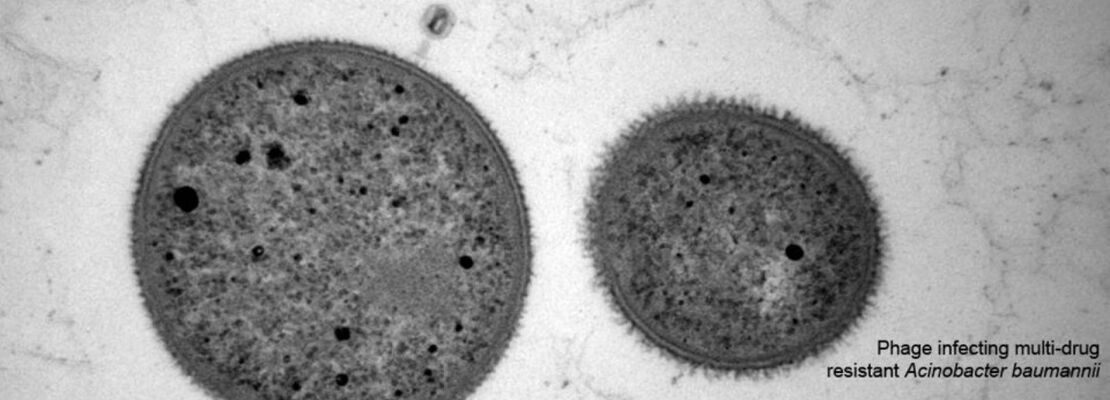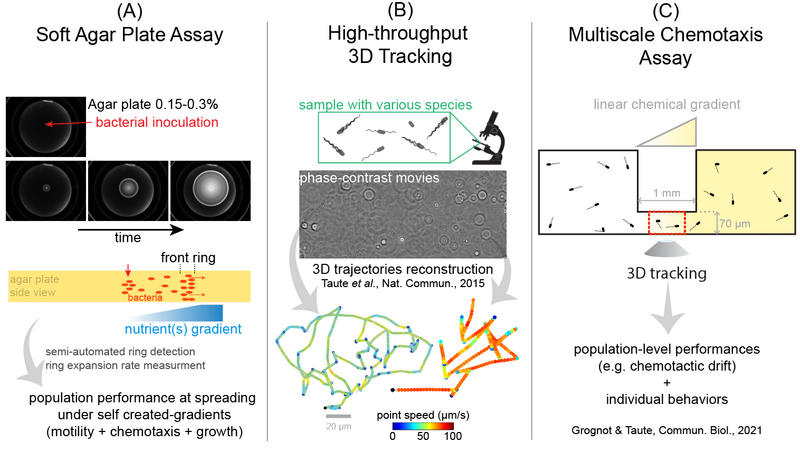Our Research
We are a new laboratory in the Institute of Medical Microbiology, at the RWTH University Hospital in Aachen, since summer 2022. Our research is oriented towards the biophysics of host-microbe interactions, by harnessing and expanding quantitative methods to assess how microbes navigate the host environments -with an emphasis on gut mucus.
Our Motivations
An estimated half of bacteria are able to swim by rotating one or several flagella. Most of them are also able to bias this swimming in order to climb or descend a chemical gradient, in a process called chemotaxis. Altogether, motility and chemotaxis enable a motile bacterium to navigate its environment, which can modulate its performances such as spreading, reaching food source, surviving… and for many bacterial pathogens: infecting the host.
Navigation abilities has been studied extensively in the peritrichously flagellated model organism E. coli in buffer, but much less attention has been devoted to the diversity of motility patterns displayed by other organisms with different flagellar architectures or to motility in viscous or porous environments that more closely mimic the complexity of natural habitats.
In the case of bacterial pathogens, there are very strong incentives to think their motility and chemotaxis are important, and it is often hypothesized to be -at least partly- for allowing bacteria to cross the mucus barrier protecting our mucosa in the early steps of infection. Yet to date, no direct observation nor quantification of this potential infection mechanism is available.
Therefore we aim to explore the motility and chemotaxis of bacterial pathogens and commensals in mucus as a new angle of approach in the field of host-microbe interactions. We do so using our already established methods (see below), but also by extending bacterial 3D tracking to relevant gut-mimicking environment.
The three methodological pillars of our work
Figure – Quantitative methods to address motility, chemotaxis and growth, altogether or independently. (A) A standard soft agar plate screening assay: petri dishes filled with soft (0.15-0.3%) agar are inoculated with bacteria. Over time, the motile bacteria spread outwards in the soft agar, motivated by nutrient gradients they themselves create by locally consuming them, creating visible white ring waves. (B) Direct characterization of motility in bulk by the mean of a high-throughput 3D-tracking technique, based on phase-contrast imaging (Taute et al., Nat. Commun., 2015). We can obtain thousands of 3D trajectories of swimming bacteria in minutes, without any staining. The trajectories obtained are analyzed in a semi-automated fashion to determine their main characteristics (speed, type of motility, turning frequency, diffusivity…), and to compare different strains and/or mutants. (C) A multiscale chemotaxis assay we developed (Grognot et al., Commun. Biol., 2021). It makes use of method B to track bacteria, within a commercially available microfluidic device where a linear gradient of our choice is created. This method gives a direct measurement of chemotaxis, the chemotactic drift (average speed at which a population climbs or descends a gradient), while addressing how individuals bias their motility to achieve it.














